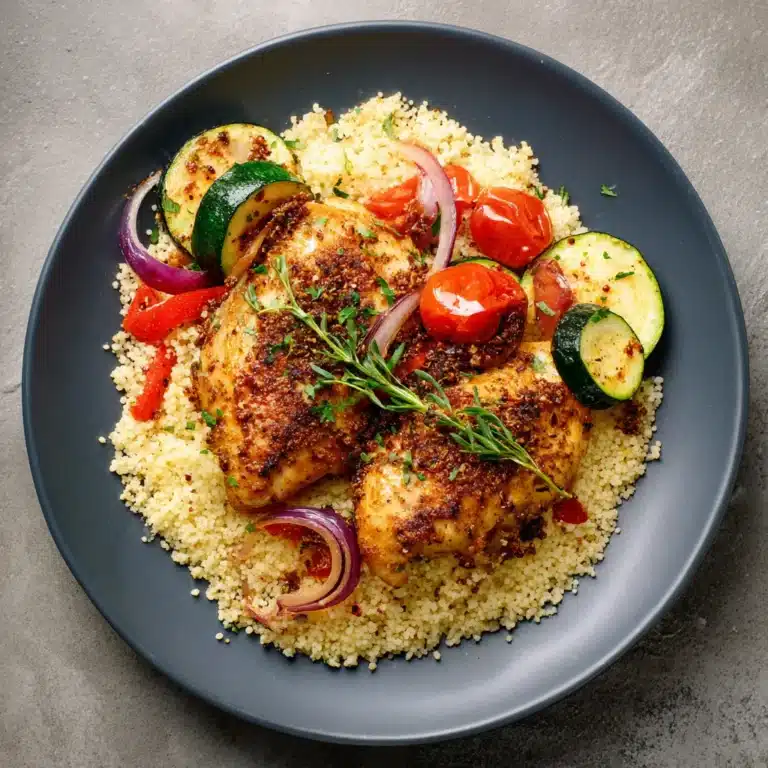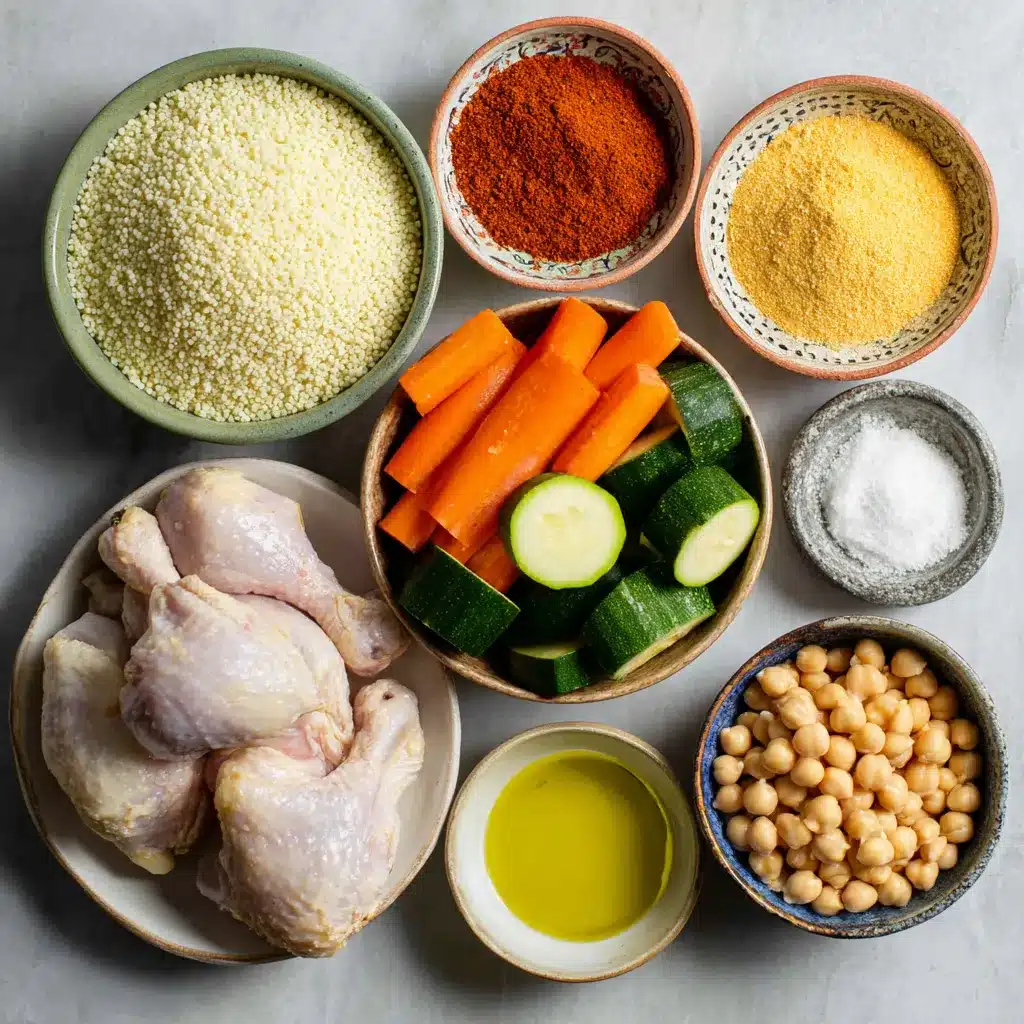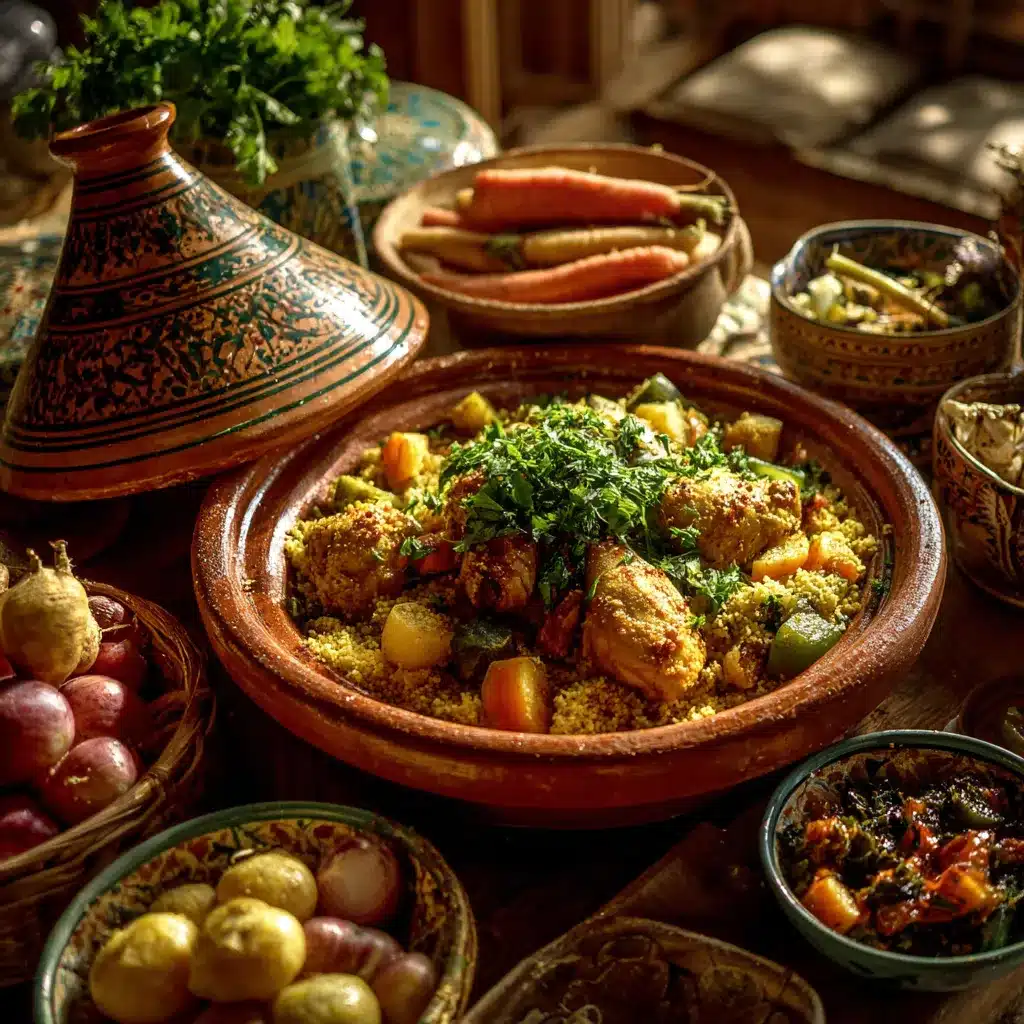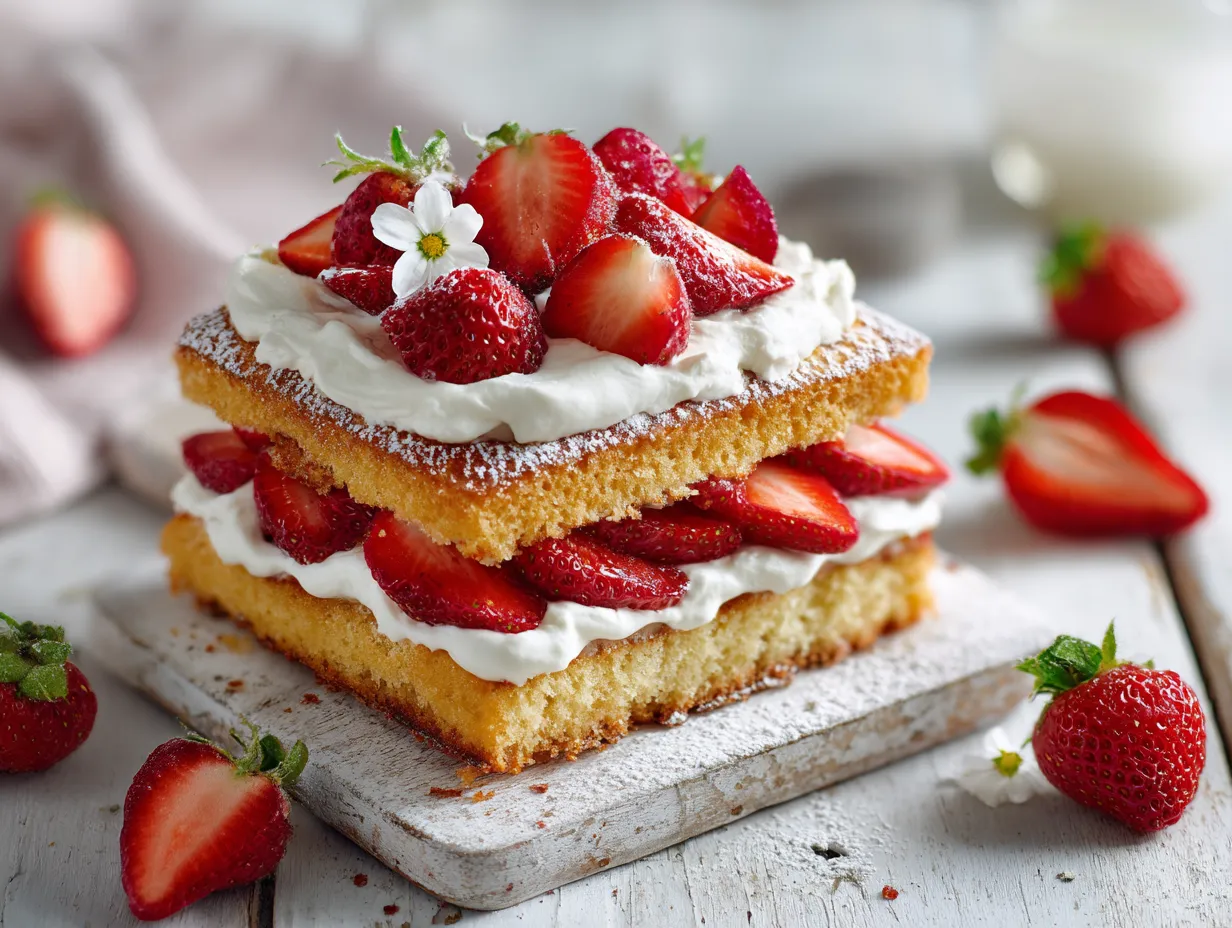
There’s something magical about a dish that’s both comforting and packed with rich cultural history—Moroccan couscous and chicken is exactly that. This flavorful North African staple brings together fluffy steamed couscous, spiced chicken, and tender vegetables in a harmony that warms the soul. Whether you’re making it for Sunday dinner or celebrating with family, this meal bridges generations and borders. In this article, we’ll explore its origins, how chicken pairs so well with couscous, and tips to make your own at home with ease. Get ready to fall in love with one of the most celebrated Moroccan chicken dishes.
Table of Contents
ToggleThe Soul of Moroccan Couscous
A Family Tradition from Marrakesh
Growing up, Sunday afternoons meant one thing: the unmistakable aroma of Moroccan couscous and chicken filling the house. Our kitchen would buzz with warmth and spice—chicken slow-cooked with saffron, turmeric, and cumin, while couscous was gently steamed by hand. This wasn’t just lunch; it was a ritual. Couscous isn’t merely a side dish in Morocco—it’s a tradition, often served during family gatherings, weddings, or special Fridays. Just like in the instant pot chicken recipes category, where flavors come together under pressure, traditional couscous comes to life through layers of texture, spice, and history.
Today, I carry on that tradition using shortcuts like pre-steamed couscous or pressure cooking the chicken. But the heart of it—the warm spices, the olive oil drizzle, the tender bites of chicken—remains true. Whether you use a frozen chicken breast or fresh thighs, Moroccan seasoning transforms it into something deeply satisfying.
What Makes Moroccan Couscous Unique?
In Morocco, couscous is more than tiny pasta grains. It’s typically made from semolina and hand-rolled, giving it a light, fluffy texture that absorbs flavor beautifully. The dish itself is a full meal: couscous forms the base, topped with chicken, chickpeas, and vegetables like carrots, zucchini, and turnips. It’s often accompanied by a flavorful broth called “marka,” poured over the top just before serving. Unlike instant boxed versions, traditional Moroccan couscous is steamed multiple times, which helps each grain stay separate and tender.
This technique results in a dish that feels celebratory yet comforting—ideal for holidays, guests, or simply when you need something nourishing and flavorful.
Print
Moroccan Couscous and Chicken – Traditional Flavor Meets Modern Comfort
5 Stars 4 Stars 3 Stars 2 Stars 1 Star
No reviews
A comforting Moroccan couscous and chicken dish with warm spices, vegetables, and fluffy couscous steamed to perfection.
- Total Time: 1 hour
- Yield: Serves 6
Ingredients
6 chicken thighs, bone-in
2 cups couscous
1 onion, chopped
3 carrots, chopped
2 zucchinis, chopped
1/2 cup chickpeas (cooked)
2 tablespoons olive oil
1 teaspoon turmeric
1 teaspoon ground ginger
1 teaspoon cinnamon
Salt and pepper to taste
4 cups chicken broth
Instructions
1. Heat olive oil in a pot. Sauté onion until soft.
2. Add chicken and brown on all sides.
3. Stir in spices and mix well.
4. Add broth and vegetables. Cover and simmer for 30 minutes.
5. Place couscous in a steamer above the pot. Steam 15–20 minutes.
6. Fluff couscous and steam again for another 10 minutes.
7. Serve couscous on a platter topped with chicken, vegetables, and broth.
Notes
Use harissa for a spicier version. Garnish with preserved lemons or caramelized onions for extra flavor.
- Author: Tiramisu Cake
- Prep Time: 20 minutes
- Cook Time: 40 minutes
- Category: Main Course
- Method: Steamed and Braised
- Cuisine: Moroccan
Nutrition
- Serving Size: 1 plate
- Calories: 490
- Sugar: 6g
- Sodium: 480mg
- Fat: 19g
- Saturated Fat: 5g
- Unsaturated Fat: 12g
- Trans Fat: 0g
- Carbohydrates: 48g
- Fiber: 5g
- Protein: 32g
- Cholesterol: 90mg
Chicken and Couscous – A Perfect Match
Why Couscous Goes So Well with Chicken
Pairing couscous with chicken isn’t just a delicious idea—it’s a natural match rooted in both Moroccan cooking traditions and culinary science. Couscous, with its soft and absorbent texture, acts like a sponge for the aromatic chicken broth and spices. The result? Every bite bursts with flavor.
Chicken, on the other hand, offers a neutral base that carries Moroccan spices beautifully. Whether you use drumsticks or thighs, they soak in the seasoning and stay juicy during the cooking process. This makes moroccan couscous and chicken one of the most satisfying combinations in North African cuisine.
Even modern adaptations like the ones used in this flavorful chicken quesadilla recipe rely on spice and texture balance. In Moroccan dishes, the blend of cumin, cinnamon, paprika, and ginger helps chicken harmonize with the delicate nature of couscous without overpowering it.
North African Flavors That Transform Chicken
One of the keys to great Moroccan chicken couscous is the seasoning. North African food uses a fragrant blend of spices like ras el hanout, turmeric, saffron, and coriander. These flavors not only define the dish but also create a multi-layered eating experience.
Chicken becomes more than protein here—it’s a carrier of deep, bold flavor. You can braise it slowly, roast it with preserved lemon, or simmer it in tomato-based sauce with root vegetables. Many of these techniques echo methods from meals like this sweet potato taco bowl where spices enhance simplicity.
Traditionally, the chicken is cooked in a pot with onions, garlic, oil, and spices. As it simmers, it creates a broth—“marka”—that’s later spooned over the couscous before serving. This layering of moisture, protein, and grain turns a humble dish into something grand.
Moroccan Chicken Couscous Recipe Guide

Key Ingredients for Authentic Flavor
To create authentic traditional Moroccan chicken couscous, start with simple, whole ingredients that work in harmony. The foundation is a stewed chicken, typically bone-in thighs or drumsticks, simmered in a mix of onion, garlic, olive oil, and Moroccan spices like turmeric, ginger, and cinnamon.
Vegetables are essential too. While the mix can vary by region, common additions include carrots, zucchini, turnips, and chickpeas. These simmer with the chicken to develop a rich, aromatic broth known as “marka.” The couscous, usually fine-grain semolina, is steamed above the stew so it absorbs the rising flavors.
This setup allows the grains to remain light and fluffy, unlike boxed versions that get mushy when boiled. In Moroccan homes, steaming is often done three times. It’s time-consuming, but modern recipes offer shortcuts with excellent results. For example, using a base like this how to cook chicken in Instant Pot guide saves time while still delivering deep flavor.
This combination of spiced meat, hearty vegetables, and aromatic broth is what defines Moroccan chicken stew—and turns a basic dinner into something extraordinary.
How to Cook Traditional Couscous and Chicken
Start by browning your chicken pieces in olive oil with finely chopped onion and garlic. Add turmeric, cumin, cinnamon, and ginger, stirring until the spices bloom. Add water or broth, cover, and let the stew simmer. Then, layer your couscous with vegetables in a steamer above the pot.
As the chicken cooks, the steam rises and gently softens the couscous while infusing it with flavor. Fluff the grains between each steam session to keep the texture light. When ready, arrange couscous on a large platter, top with chicken, vegetables, and ladle broth over everything.
For a spicier version, consider adding harissa or saffron threads. This creates a warm, rich spiced chicken couscous perfect for cooler evenings. If you want to keep things simple and weeknight-friendly, try a semi-prepped version paired with a dish like this cottage cheese taco bowl—both healthy and satisfying.
Customizing and Serving
Common Side Dishes Moroccans Eat with Couscous
In Morocco, couscous isn’t just the main course—it’s the centerpiece of a shared table. While the classic pairing is moroccan couscous and chicken, it’s traditionally served with a range of accompaniments that vary by region. One of the most common additions is couscous with vegetables, particularly carrots, zucchini, pumpkin, and chickpeas, all simmered in the same spiced broth as the chicken.
On Fridays, when couscous is often served after prayers, it’s typically presented on a large communal platter and enjoyed family-style. It may be paired with laban (buttermilk), dates, or boiled eggs. Some households add caramelized onions and raisins to the center of the couscous mound for a subtle sweetness, creating a beautiful balance of savory and sweet.
This balance mirrors other comforting meals like this keto pasta, where hearty ingredients meet flavorful customization. Even fusion versions of couscous can reflect traditional values while embracing modern tastes.
For a more festive dish, many Moroccan families prepare chicken tagine with couscous, using preserved lemons, olives, and saffron. While tagine is usually served with bread, pairing it with couscous makes it heartier and turns it into a full meal.
Couscous Variations – What Makes Moroccan Style Different?

Couscous exists across North Africa, but Moroccan couscous stands out for its texture and the technique behind it. Unlike instant or boiled versions, Moroccan-style couscous is steamed, fluffed multiple times, and served with a rich broth instead of dry grains. This difference is why many consider Moroccan couscous to be a Mediterranean couscous dish in its own right—elegant, delicate, and deeply flavorful.
Variations also come from the choice of meat. While chicken is the most common, lamb or beef can be used depending on the occasion. Vegetarians often swap meat for hearty chickpeas, squash, and turnips. These adaptations make it a versatile dish, perfect for both traditional gatherings and easy weeknight meals. When time is tight, a recipe from our carnivore diet recipes page may offer inspiration for a simplified yet protein-rich version.
Whether you’re going traditional or exploring fusion, Moroccan couscous invites creativity while staying rooted in its warm, communal spirit.
FAQs About Moroccan Couscous and Chicken
Does couscous pair well with chicken?
Yes—couscous and chicken make a naturally balanced pair. The light, fluffy texture of couscous absorbs the spiced juices from the chicken beautifully, especially in Moroccan cooking where the broth is rich and fragrant. The result is a hearty dish full of flavor and comfort.
What do Moroccans typically serve with couscous?
In Moroccan households, couscous is often topped with a colorful medley of vegetables like carrots, zucchini, and pumpkin, along with tender meat and chickpeas. For extra flavor, some families garnish it with sweet caramelized onions or raisins. It’s commonly accompanied by laban (buttermilk) or a cup of mint tea.
What is a classic Moroccan chicken dish?
One standout is the spiced Moroccan chicken couscous, where chicken is simmered in seasoned broth and served over steamed couscous with vegetables. Another is chicken tagine made with preserved lemons and olives—both dishes are rich in tradition and flavor.
How is Moroccan couscous different from regular couscous?
Unlike the quick-cooking couscous you might find boxed in stores, Moroccan couscous is steamed multiple times and often handmade. This gives it a lighter, more delicate texture. The Moroccan version is also served with a flavorful broth and vegetables, making it a full meal rather than just a side.
Conclusion
Moroccan couscous and chicken is more than a dinner—it’s a reflection of culture, care, and culinary tradition. With each spoonful, you’re tasting the history of North Africa: tender meat infused with spice, vegetables slow-cooked in broth, and semolina grains steamed to perfection. This dish brings people together around the table, whether it’s a holiday, a family Friday, or just a weeknight craving something warm and soulful. You don’t need a clay pot or a grandmother’s kitchen to enjoy it—just a few simple ingredients, the right seasoning, and a love for big, comforting flavors.




